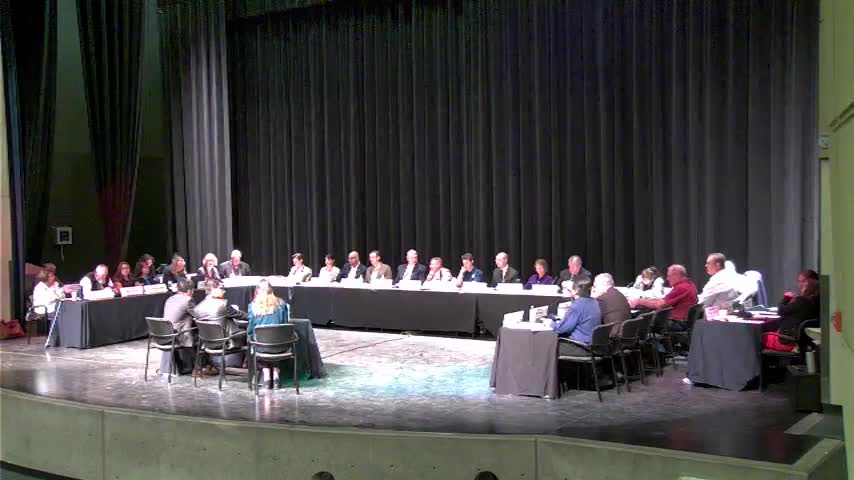New Mexico CTE Schools Implement Creative Solutions for Teacher Shortages
September 20, 2024 | Legislative Education Study, Interim, Committees, Legislative, New Mexico
This article was created by AI summarizing key points discussed. AI makes mistakes, so for full details and context, please refer to the video of the full meeting. Please report any errors so we can fix them. Report an error »

In a recent meeting of the New Mexico Legislature, education leaders gathered to address pressing issues surrounding Career and Technical Education (CTE) and the challenges faced by schools in the state. The atmosphere was charged with a sense of urgency as representatives discussed the barriers to hiring qualified CTE teachers, a situation that has left many schools struggling to meet the needs of their students.
One of the key points raised was the ongoing shortage of licensed CTE teachers, which has prompted innovative solutions in districts like Hobbs. There, schools have begun pairing CTE instructors with teachers who have more traditional backgrounds, creating co-teaching teams that aim to bridge the gap in workforce limitations. This collaborative approach highlights the creativity and resourcefulness of educators in the face of systemic challenges.
However, concerns were voiced about the barriers that still exist, particularly regarding background checks and licensure requirements for industry professionals who might want to contribute to educational programs. One representative emphasized the need for a more streamlined process, questioning why companies would invest time and resources into school partnerships when faced with such obstacles.
The discussion also touched on the importance of sustaining successful educational initiatives. Legislators expressed frustration over funding that is often temporary, leaving schools in a precarious position once grants expire. A representative pointed out that while significant funds have been allocated for programs aimed at reducing absenteeism, there is a risk that these efforts will falter without ongoing support.
Senator Stewart highlighted the evolution of educational programs, referencing the K-12 Plus initiative that has grown from a small pilot to a comprehensive program based on data-driven results. He acknowledged the challenges faced during the pandemic, which led to restrictive measures that hindered the effectiveness of some initiatives. Yet, he remained optimistic about the potential of programs like the Summer Literacy Institute, which aims to improve reading proficiency among students.
As the meeting concluded, the overarching theme was clear: there is a pressing need for more input from school districts to inform legislative decisions. Educators and lawmakers alike recognized that understanding the specific needs of schools is crucial for developing effective, long-term solutions that will ultimately benefit students across New Mexico. The dialogue continues, with a shared commitment to overcoming barriers and enhancing educational opportunities for all.
One of the key points raised was the ongoing shortage of licensed CTE teachers, which has prompted innovative solutions in districts like Hobbs. There, schools have begun pairing CTE instructors with teachers who have more traditional backgrounds, creating co-teaching teams that aim to bridge the gap in workforce limitations. This collaborative approach highlights the creativity and resourcefulness of educators in the face of systemic challenges.
However, concerns were voiced about the barriers that still exist, particularly regarding background checks and licensure requirements for industry professionals who might want to contribute to educational programs. One representative emphasized the need for a more streamlined process, questioning why companies would invest time and resources into school partnerships when faced with such obstacles.
The discussion also touched on the importance of sustaining successful educational initiatives. Legislators expressed frustration over funding that is often temporary, leaving schools in a precarious position once grants expire. A representative pointed out that while significant funds have been allocated for programs aimed at reducing absenteeism, there is a risk that these efforts will falter without ongoing support.
Senator Stewart highlighted the evolution of educational programs, referencing the K-12 Plus initiative that has grown from a small pilot to a comprehensive program based on data-driven results. He acknowledged the challenges faced during the pandemic, which led to restrictive measures that hindered the effectiveness of some initiatives. Yet, he remained optimistic about the potential of programs like the Summer Literacy Institute, which aims to improve reading proficiency among students.
As the meeting concluded, the overarching theme was clear: there is a pressing need for more input from school districts to inform legislative decisions. Educators and lawmakers alike recognized that understanding the specific needs of schools is crucial for developing effective, long-term solutions that will ultimately benefit students across New Mexico. The dialogue continues, with a shared commitment to overcoming barriers and enhancing educational opportunities for all.
View full meeting
This article is based on a recent meeting—watch the full video and explore the complete transcript for deeper insights into the discussion.
View full meeting
